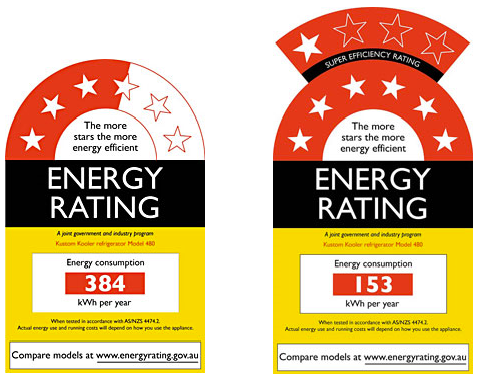KEY POINTS
- Heating and cooling appliances are responsible for up to 50% of Australian household energy use.
- Hot water use can account for over 23% of a household’s energy usage.
- The majority of electricity plans on the market have variable usage rates, which means that price changes in the energy market are common.
This Canstar Blue article has compiled the top 10 reasons why an electricity bill may be higher than expected.
Avoid ‘bill shock’ from a surprisingly high electricity bill and take control of your energy use with the following tips.
On this page:
Reasons why your power bill might be so high
1. Air conditioners and/or heaters
According to EnergyAustralia, heating and cooling appliances are responsible for up to 50% of Australian household energy use. An appropriately sized appliance designed to heat or cool your household will result in significant energy savings all year round.
The inefficiency of running an air conditioner for too long or operating it in a non-insulated or large area will increase energy bills.
Solution:
- Set your air conditioner or heating temperature control to 22-24˚C in summer and 19-21˚C in winter. Setting the temperature incorrectly will result in an increased cost of 5-10% for every extra degree used.
- Combine a fan with an air conditioner in both cool and hot weather. Use the air conditioner to cool or heat the room, then use the fan to circulate that air.
- Most modern ceiling fans have a winter or summer mode that will change the direction that air flows.
- If you live in a hot and dry climate, consider using an evaporative cooler, which is a more eco-friendly and energy-efficient alternative.
2. Older appliances
Energy-efficient appliances can make a significant impact on annual electricity bills. Fortunately, the Australian Government regulates the Energy Rating label, helping Australians compare home appliance energy consumption for over 30 years.
According to the Australian Government’s Department of Climate Change, Energy, the Environment and Water, home appliances account for 30% of a household’s energy bill. Choosing energy efficient appliances is one of the most effective ways to avoid high electricity bills.
Solution:
- When possible, update older or energy-draining appliances by following the Energy Rating label (see image below). The more stars, the more energy efficient the appliance is.
- Use the following formula to calculate an estimated running cost for the appliance:
- Annual running cost = annual total energy consumption (kWh) x electricity tariff ($ per kWh).
Image source: energyrating.gov.au
3. Energy-intensive appliances
Energy-intensive appliances such as pool pumps are known to consume copious amounts of energy. If you’re on a time-of-use tariff, running a pool pump at night would contribute significantly to your energy bill.
Thankfully, there are ways to rein in those costs.
Solution:
- If you have rooftop solar, consider replacing it with a solar pool pump instead.
- Consider a controlled load tariff structure, where energy-intensive appliances are metered separately at a lower rate from the rest of your household — however, nominated appliances are generally limited to operate during off-peak hours.
4. Standby appliances
Standby power consumption, or a ‘phantom load’, is a silent energy consumer. While these devices don’t contribute very much individually, a houseful of phantom loads could result in a much larger annual electricity bill.
Solution:
Turn phantom load appliances off at the wall or install a smart power board. The smart power board can cut electricity to a certain device when it senses that it’s in standby mode, but will leave active devices on.
5. Heating water
Hot water use can account for over 23% of energy usage in an Australian home, according to the Australian Government’s YourHome website.
Between the kitchen, laundry and bathroom, hot water systems in the home require a lot of energy.
Solution:
- Install low-flow taps and shower heads.
- Install a continuous flow hot water system (also known as instant hot water systems), which is more energy-efficient with lower ongoing bill costs.
- If you’re using an old hot water system, install a hot water system timer to control when your system turns on and off.
- Take shorter showers.
- Wash clothes in cold water.
- Use the eco setting on the washing machine and dishwasher.
- Have mixer taps in ‘cold’ position.
- Check the hot water system for leaks.
If you already have rooftop solar installed, installing a solar hot water system or solar diverter could help you save more money by using solar energy to heat up your water. However, you should consult with a professional solar installer first before making a decision.
6. Being at home
Due to the extra appliance use, working from home and holiday periods can result in higher electricity bills.
Solution:
- If you work frequently from home during peak times and you’re on a time of use tariff, consider switching to a single rate tariff.
- Work off-site such as at a cafe to minimise your home energy consumption.
7. Lighting
According to the Australian Government, a typical Australian home contains 37 light bulbs. So while a single light bulb might not use much electricity, 37 incandescent light bulbs will.
Due to their reliance on older and inefficient technology, incandescent and halogen light bulbs are notorious for being energy-hungry.
Newer compact fluorescent (CFL) and light-emitting diode (LED) models use far less energy to create the same amount of light.
LED light bulbs use 80% less energy as compared to a halogen bulb, while LED bulbs last twice as long as CFL bulbs.
Solution:
Switch out your incandescent or halogen bulbs for CFL or LED ones. LED light bulbs are slightly more expensive upfront but offer superior energy savings.
CFL light bulbs are barely more expensive than incandescent bulbs, but they are slightly less efficient than LEDs. Investing a little more in energy-efficient light bulbs could reduce your home lighting costs and overall energy bills.
8. On/off-peak electricity use
Electricity tariff rates during peak times can vary drastically compared to off-peak or shoulder times. Customers could unknowingly be paying more for energy when using appliances during peak electricity times.
Solution:
Try and be aware of your electricity tariff structure and how it can impact your power bill.
- Those on a time of use tariff should minimise the use of energy-draining appliances in peak times.
- Using an energy usage monitor can help you understand and change your energy consumption habits.
- Utilise solar power where possible during peak hours.
- Rooftop panels and a solar battery will help to avoid peak electricity times by letting you access electricity you’ve stored at a cheaper price.
9. Energy allowances and meter readings
Some electricity plans come with an ‘energy allowance’ for which a certain usage rate is charged. If this is exceeded, customers are charged a higher rate for usage beyond their allowance.
Those with a smart meter installed can access live updates on their energy usage, generally every half hour.
Customers with other meter types will need the distributor to physically check the electricity meter. Inaccessible meters may receive an estimated energy usage instead.
A bill estimate is indicated by an ‘E’ next to the meter reading. Many energy retailers take estimated readings and later send settlement figures.
Solution:
Install a smart meter. A smart meter records energy use in half-hour blocks for more accurate reporting.
Customers in Victoria should already have a smart meter, as government policy from 2013 stated that electricity providers must roll out smart meters to all homes.
In November 2024, the Australian Energy Market Commission (AEMC) is also accelerating the national deployment of smart meters.
Moreover, some providers offer dedicated apps that connect to your smart meter for ease of tracking and monitoring of your energy consumption.
10. Electricity concessions not applied
Customers who receive electricity concessions should always check that the concession has been applied to the final amount.
Solution:
If a credit or concession has not been applied, customers need to contact their energy provider and bring it to their attention.
Aussies living in an apartment or residential complex within an embedded network may also be eligible for federal or state concessions, depending on the conditions of each program.
11. Energy price changes
The majority of electricity plans on the market have variable usage rates, which means that price changes in the energy market are common. These price increases can account for unexpectedly high electricity bills.
Solution:
If you’re unsure whether your energy plan is fixed or variable, you can check out the Canstar Blue electricity comparison tool at the bottom of this page. With this tool, customers can also compare current electricity, gas and solar plans to see what the cheapest and best value plans are on the energy market.
You might also be interested in:
12. Haven’t switched energy plans for a while
If you’ve not switched energy plans for more than 12 months, your previous energy plan has most likely expired, with your energy provider automatically reverting you to the default offer in your state.
A default offer is the regulated maximum price electricity retailers can charge, protecting Aussies who don’t engage with the market from paying sky-high prices.
Default offers are known as Default Market Offers in New South Wales, South East Queensland, and South Australia, and Victorian Default Offers (VDO) in Victoria.
Because the default offer wasn’t designed to be the ‘cheapest’ energy plan in your area, other market offers are likely to be cheaper.
Market offers typically come with more competitive usage rates and supply charges, possibly alongside conditional discounts such as pay-on-time discounts. In some cases, retailers may even incentivise you to switch to them with a switching deal or promotion.
The best way to shop around for a more competitive plan is to compare their respective energy fact sheets, which clearly spell out their usage and supply rates, discount conditions and benefit terms.
Do take note that Western Australia (WA) is a regulated energy market — most customers in WA will not be able to independently select their energy providers. For more information, visit Canstar Blue’s Guide to Energy in WA.
We highly recommend using the Canstar Blue’s comparison table below to compare some of the cheapest deals available across Australia.
Compare cheaper energy deals
The Canstar Blue table below shows some of the cheapest energy deals in NSW, QLD, SA and VIC. If you have the name of the energy plan you are on, you can search its usage rates and compare it with some of the cheapest on the market. This could help you find out if the energy rate you are paying is why your electricity bill is so high.
Here are some of the cheapest published deals from the retailers on our database that include a link to the retailer’s website for further details. These are products from referral partners†. These costs are based on the Ausgrid network in Sydney but prices may vary depending on your circumstances. This comparison assumes general energy usage of 3900kWh/year for a residential customer on a single rate tariff. Please use our comparison tool for a specific comparison in your area. Our database may not cover all deals in your area. As always, check all details of any plan directly with the retailer before making a purchase decision.
Here are some of the cheapest published deals from the retailers on our database that include a link to the retailer’s website for further details. These are products from referral partners†. These costs are based on the Citipower network in Melbourne but prices may vary depending on your circumstances. This comparison assumes general energy usage of 4000kWh/year for a residential customer on a single rate tariff. Please use our comparison tool for a specific comparison in your area. Our database may not cover all deals in your area. As always, check all details of any plan directly with the retailer before making a purchase decision.
Here are some of the cheapest published deals from the retailers on our database that include a link to the retailer’s website for further details. These are products from referral partners†. These costs are based on the Energex network in Brisbane but prices may vary depending on your circumstances. This comparison assumes general energy usage of 4600kWh/year for a residential customer on a single rate tariff. Please use our comparison tool for a specific comparison in your area. Our database may not cover all deals in your area. As always, check all details of any plan directly with the retailer before making a purchase decision.
Here are some of the cheapest published deals from the retailers on our database that include a link to the retailer’s website for further details. These are products from referral partners†. These costs are based on the SA Power network in Adelaide but prices may vary depending on your circumstances. This comparison assumes general energy usage of 4000kWh/year for a residential customer on a single rate tariff. Please use our comparison tool for a specific comparison in your area. Our database may not cover all deals in your area. As always, check all details of any plan directly with the retailer before making a purchase decision.
What can I do to make sure my electricity bill isn’t so high?
If you are wondering why your electricity bill is so high, consider what has been different during your payment cycle.
If you need help managing your electricity usage, there are plenty of energy saving products which help monitor energy usage and reduce standby usage.
If all else fails, give your energy provider a call and ask them if there has been a change to usage rates or if you’ve lost a particular discount for some reason – if you’ve tried this with no luck, then perhaps it’s time to compare energy providers and consider a switch.
Original reporting by Jared Mullane
Image Source: energyrating.gov.au, Damir Khabirov/Shutterstock.com




Share this article